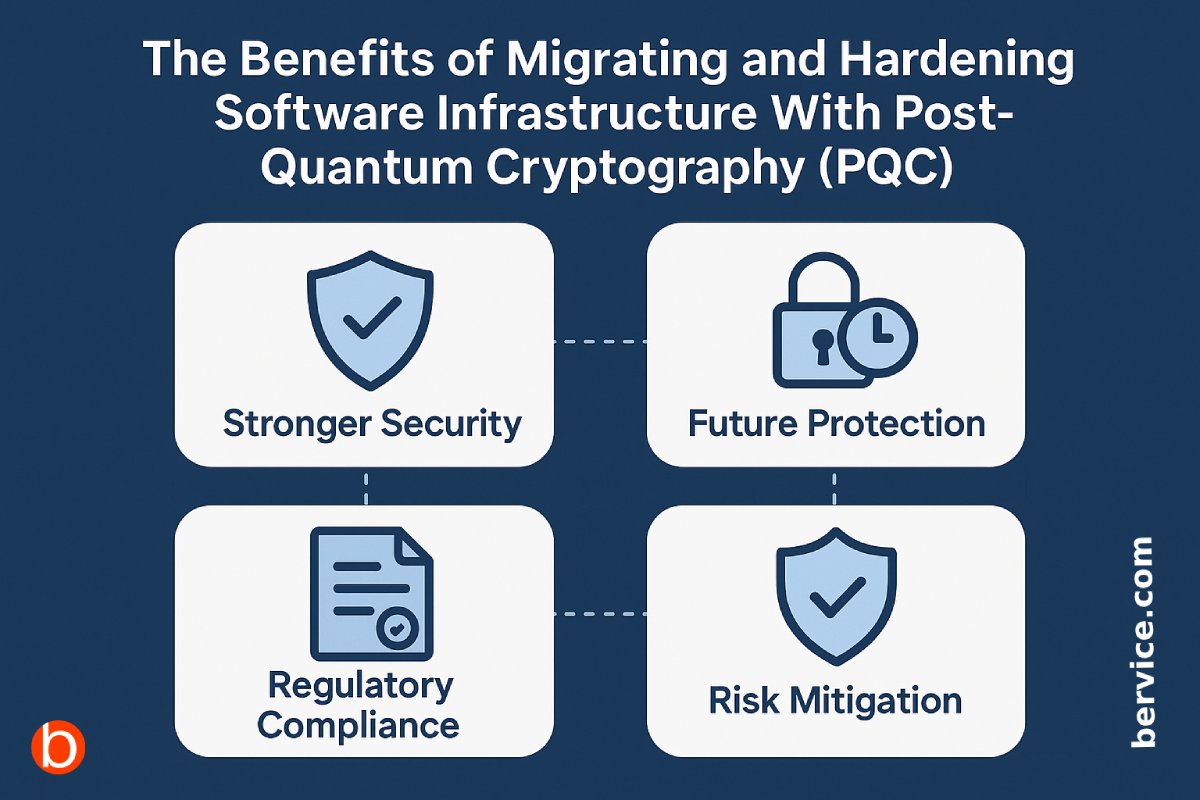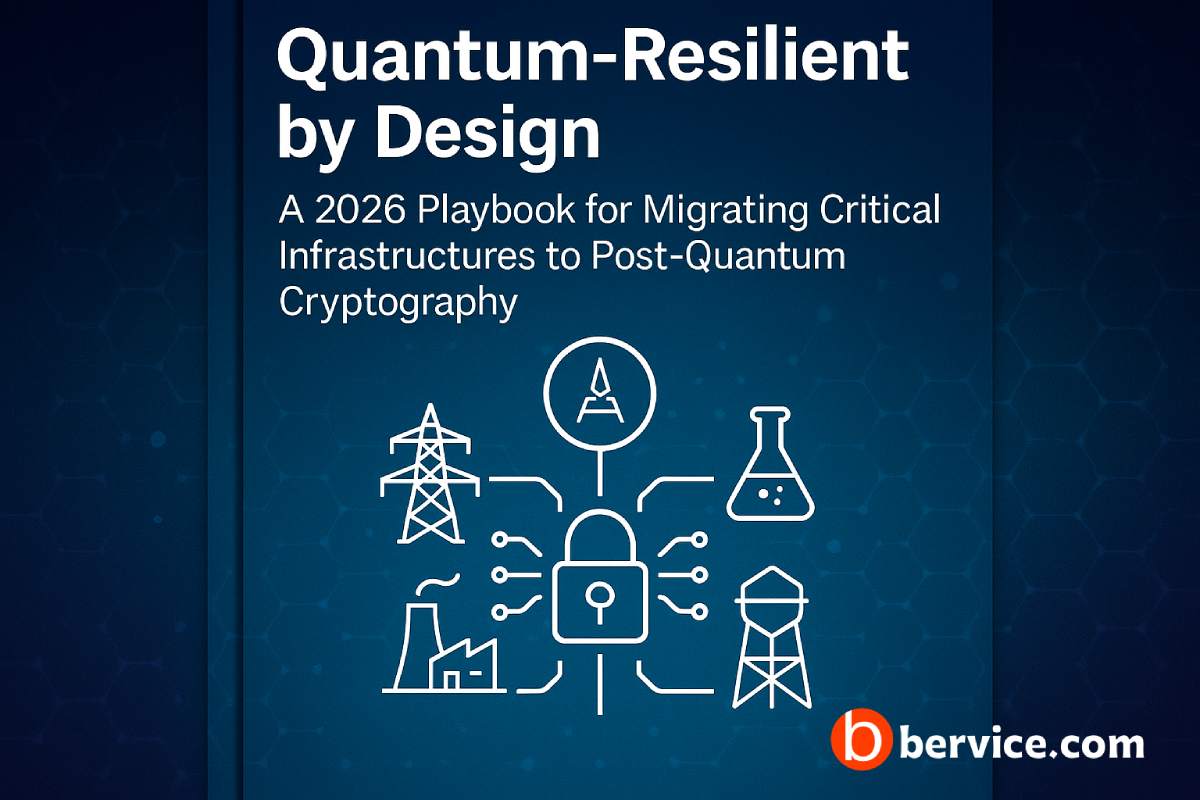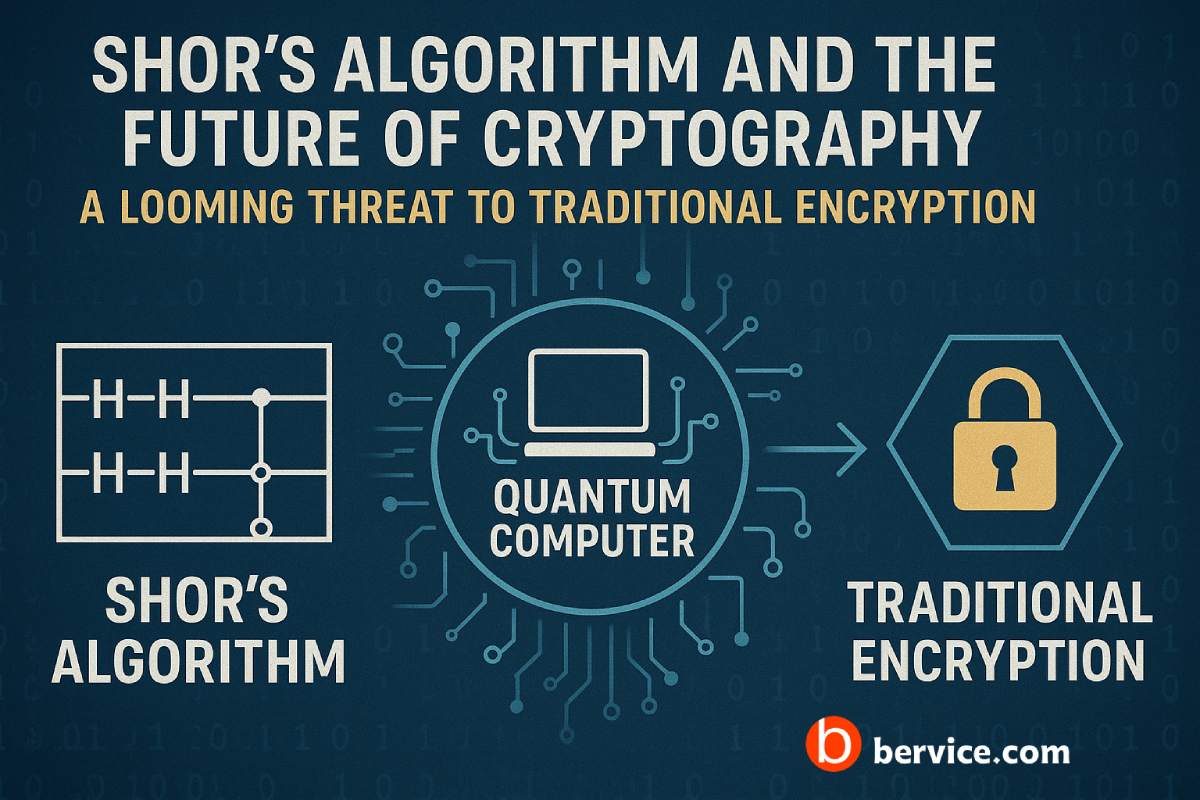
1. Why Quantum Resilience Matters Now
Quantum computers able to break today’s RSA and ECC could arrive within the next five-to-ten years, and attackers are already harvesting encrypted traffic to decrypt later (“harvest-now, decrypt-later”). A July 2025 Capgemini survey found 70 % of large enterprises are preparing for quantum threats today, ranking the risk higher than ransomware.TechRadar
2. What “Post-Quantum” Means in Practice
Post-quantum cryptography uses lattice-based, hash-based, multivariate or code-based math that resists both classical and quantum attacks. In August 2024 NIST finalized the first three standards—
FIPS 203 (Kyber KEM), FIPS 204 (Dilithium signatures), and FIPS 205 (SPHINCS+ signatures).
Federal agencies and vendors now have clear implementation guidance and timelines.NIST Computer Security Resource CenterNIST
3. Six Strategic Benefits of PQC Migration
| Benefit | Why It Matters |
|---|---|
| Future-Proof Security | Eliminates the single biggest known vulnerability—quantum factorization—before it becomes exploitable. |
| Regulatory Compliance | Early alignment with FIPS 203/204/205 avoids costly “rip-and-replace” mandates later. |
| Long-Term Data Privacy | Protects PII, medical records, financial and IP assets that must remain confidential for decades. |
| Brand Trust & Competitive Edge | Demonstrates proactive security leadership to customers, partners, and investors. |
| Operational Continuity | Reduces risk of downtime or emergency patching once a quantum threat is public. |
| Innovation Enablement | Securely underpins emerging use-cases—decentralized identity, IoT firmware signing, hybrid multi-cloud key management. |
Analysts at ISACA and Encryption Consulting emphasize that PQC is less a one-off upgrade and more a multi-year transformation across data-center, cloud, mobile and supply-chain connections.ISACAEncryption Consulting
4. A Proven Migration Roadmap
- Asset & Crypto Inventory – Catalogue libraries, protocols, certificates and keys (TLS, VPN, S/MIME, JWT, blockchain, etc.).
- Risk-Based Prioritization – Triage systems handling long-lived or high-value data.
- Crypto-Agility Layer – Refactor code to load algorithms from configuration, enabling swap-in/out.
- Hybrid Deployment – Run PQC alongside RSA/ECC (e.g., Kyber+X25519 in TLS 1.3), maintaining backward compatibility.
- Pilot & Monitor – Validate performance, interoperability, and side-channel hardening.
- Enterprise Roll-out & Governance – Update policies, CI/CD pipelines, HSM firmware, third-party contracts, and incident-response playbooks.
The open-source PQC Migration Roadmap from the Post-Quantum Cryptography Coalition offers detailed worksheets for each phase.Post-Quantum Cryptography Coalition
5. Lessons From Early Adopters
- Financial Services – Banks piloting Kyber-only TLS report a ~9 % CPU overhead but no customer latency impact.
- Cloud Providers – Fortanix’s new PQC Central treats migration as a continuous “process,” integrating algorithm policy controls into CI/CD.Futuriom
- Critical Infrastructure – Utilities deploying PQC VPNs ensure command-and-control traffic can’t be decrypted years later, even if intercepted today.
6. Best-Practice Design Patterns
- Hybrid Handshakes: Combine PQC + classical keys until the ecosystem fully upgrades.
- Key Rotation Windows: Shorten certificate lifetimes (e.g., 90 days) to accelerate algorithm roll-outs.
- Side-Channel Safeguards: Implement constant-time operations, masking, and fault-injection defenses—lattice math is different but still vulnerable.
- Secure Firmware Updates: Sign device updates with Dilithium or SPHINCS+ to prevent quantum forgeries.
- Zero-Trust Integration: Treat quantum resistance as an extension of identity-centric security models.
7. Conclusion: Act Today for a Quantum-Safe Tomorrow
Migrating to post-quantum cryptography is not speculative insurance—it is strategic risk reduction that preserves confidentiality, integrity, and business continuity in a fast-approaching quantum era. Organizations that begin inventorying assets, adding crypto-agility and piloting PQC hybrids today will avoid disruptive, last-minute overhauls—and stand out as forward-looking stewards of customer trust.
Ready to start? Download NIST’s reference code, review the FIPS standards, and schedule a cross-functional workshop to build your migration charter within the next 90 days.
Connect with us : https://linktr.ee/bervice





